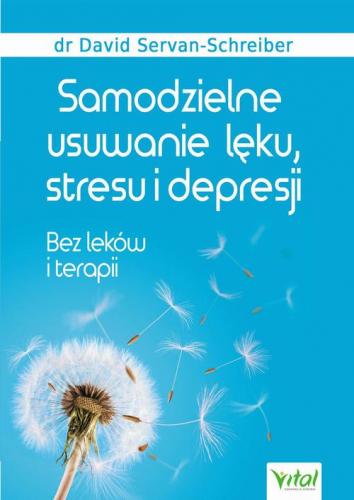16
Vaillant, G., Adaptation to Life (Boston: Harvard University Press, 1995).
17
Felsman, J. K., i G. Vaillant, Resilient Children as Adults: A 40-Year Study, w The Invulnerable Child, red. E. J. Anderson and B. J. Cohler (New York: Guilford Press, 1987).
18
Oczywiście niektóre cechy charakterystyczne uległy atrofii, jak na przykład owłosienie i wydatne szczęki.
19
Broca, P., Anatomie Comparée des Circonvolutions Cérébrales. Le Grand Lobe Limbique et la Scissure Limbique dans la Série des Ammifières, „Revue Anthropologique” 2 (1878): 385–498.
20
Zdjęcie obrazujące aktywację struktury limbicznej mózgu dostępne jest na stronie: www.instincttoheal.org.
21
Servan-Schreiber, D., W. M. Perlstein, i in., Selective Pharmacological Activation of Limbic Structures in Human Volunteers: A Positron Emission Tomography Study, „Journal of Neuropsychiatry and Clinical Neurosciences” 10 (1998): 148–159.
22
LeDoux, J. E., The Emotional Brain: The Mysterious Underpinnings of Emotional Life (New York: Simon & Schuster, 1996).
23
Levitt, P, A monoclonal antibody to limbic system neurons, „Science” 223 (1984): 299–301.
24
Damasio, A., The Feeling of What Happens (San Diego: Harcourt, 1990). W swojej najnowszej książce dr Damasio bardziej szczegółowo analizuje ten temat I przypisuje odkrycie korelacji między emocjami a procesami fizjologicznymi zachodzącymi w organizmie siedemnastowiecznemu filozofowi Baruchowi Spinozie; Damasio, A., Looking for Spinoza: Joy, Sorrow and the Feeling Brain (San Diego: Harcourt, 2003).
25
Mehler, J., G. Lambertz, i in., Discrimination de la Langue Maternelle par le Nouveau-né, „Comptes Rendus de l’Académie des Sciences” 303 (1986): 637–640.
26
Arnsten, A. F., i P. S. Goldman-Rakic, Noise Stress Impairs Prefrontal Cortical Cognitive Function in Monkeys: Evidence for a Hyperdopaminergic Mechanism, „Archives of General Psychiatry” 55, nr 4 (1998): 362–368.
27
Regier, D. A., and Robins, L. N., Psychiatric Disorders in America: The Epidemiology Catchment Area Study (New York: Free Press, 1991).
28
Ochsner, K. N., S. A. Bunge, i in., An MRI study of the cognitive regulation of emotion, „Journal of Cognitive Neuroscience” (2002). Porównaj z teorią Drevetsa i Rachile’a, którzy opisali wzajemną korelację między mózgiem kognitywnym i emocjonalnym oraz potwierdzeniem powyższej teorii w najnowszym badaniu z Uniwersytetu Duke z wykorzystaniem rezonansu magnetycznego: Yamaski i La Bar. Drevets, W. C., i M. E. Raichle, Reciprocal Suppression of Regional Cerebral Blood Flow During Emotional Versus Higher Cognitive Processes: Implications for Interactions between Emotion and Cognition, „Cognition and Emotion” 12 (1998): 353–385; Yamasaki, H., K. S. LaBar, i in., Dissociable prefrontal brain systems for attention and emotion, „Proceedings of the National Academy of Sciences” 99, nr 17 (2002):11447–11451.
29
Macmillan, M. B. (1986), A wonderful journey through skull and brains: The travels of Mr. Gage’s tamping iron, „Brain and Cognition”, nr 5 (1986): 67–107.
30
Damasio, H., T. Brabowski, i in., The Return of Phineas Gage: Clues about the Brain from the Skull of a Famous Patient, „Science” 264 (1994): 1102–1105.
31
Eslinger, P. J., and A. R. Damasio, Severe Disturbance of Higher Cognition after Bilateral Frontal Lobe Ablation: Patient EVR, „Neurology” 35 (1985): 1731–1741.
32
Levenson, R., i in., The Influence of Age and Gender on Affect, Physiology, and their Interrelations: A Study of Long-Term Marriages, „Journal of Personality and Social Psychology” 67 (1994).
33
Csikszentmihalyi, M., Flow: The Psychology of Optimal Experience (New York: Harper & Row, 1990).
34
Harrer, G., i H. Harrer, Music, Emotion and Autonomic Function, „Music and the Brain”, red. M. Critchley i R. A. Hanson (London: William Heinemann Medical, 1977) 202–215.
35
Grossarth-Maticek, R., i H. J. Eysenck, Self-regulation and Mortality from Cancer, Coronary Heart Disease and Other Causes: A Prospective Study, „Personality and Individual Differences” 19, nr 6 (1995): 781–795; Linden, W., C. Stossel, i in., Psychosocial Interventions for Patients with Coronary Artery Disease: A Meta-Analysis, „Archives of Internal Medicine” 156, nr 7 (1996): 745–752
1
Cummings, N. A., i N. Van den Bos,
2
Grossarth-Maticek, R., i H. J. Eysenck, Self
3
„Pharmacy Times”,
4
Antonuccio, D., D. D. Burns, i in., Antidepressants:
5
Langer, G.,
6
Kessler, R., J. Soukup, i in.,
7
Gabbard, G. O., J. G. Gunderson, i in.,
8
Kramer, P.,
9
Flint, A., i S. Rifat,
